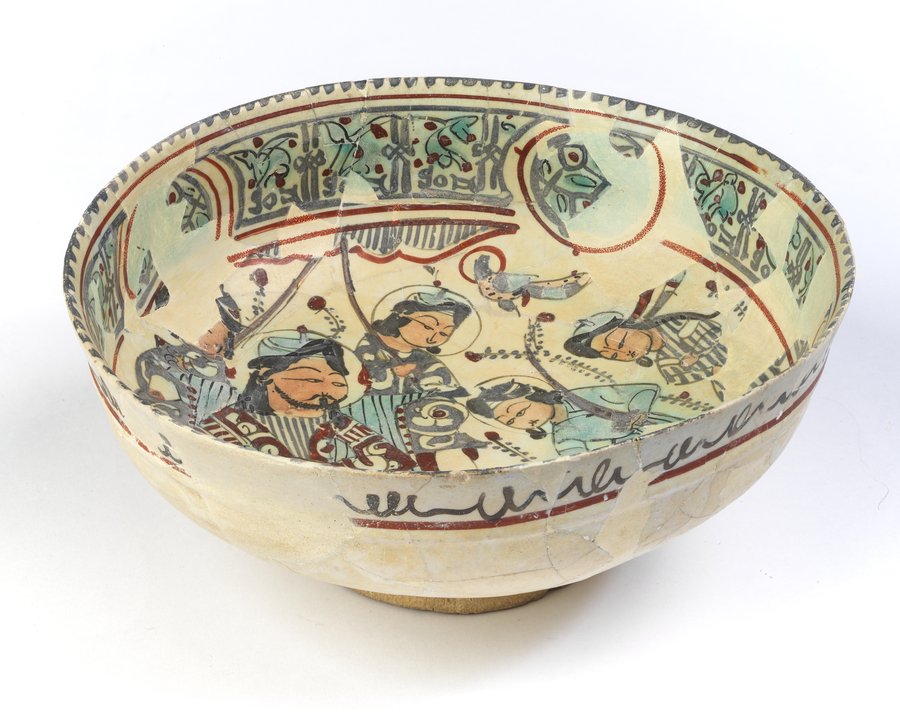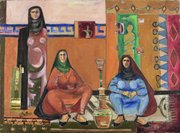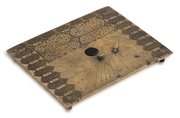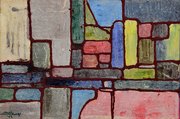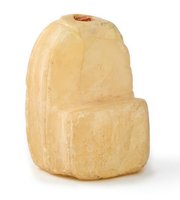
Mina'i Bowl with a Shahnameh scene
Museum of Islamic Art
- Title:
- Mina'i Bowl with a Shahnameh scene
- Production place:
- Kashan
- Date:
- 1175 - 1225
- Period:
- Seljuq
- Title:
- Mina'i Bowl with a Shahnameh scene
- Production place:
- Kashan
- Date:
- 1175 - 1225
- Period:
- Seljuq
- Material:
- Pigment, Glaze, Fritware
- Technique:
- Painting, Glazing
- Dimensions:
- 11
- Diameter:
- 21.6
Between mina'i and lusterware ceramics we possess a discretely large pool of figurative motifs that return a fragmentary yet still rich picture of the contemporary tradition of mural and manuscript painting in Iran between the 6th and 7th centuries AH/12th and the 13th centuries CE, of which little to nothing has survived to the present day. Produced mostly in Kashan between the 6th and the 7th century AH (12th and the 13th centyr CE), mina'i or haft-rangi (meaning respectively "enamelled", and "seven-coloured" in Persian) ceramic is a kind of figurative pottery that required both technological knowledge and financial means for firing facilities able to manage several rounds of firing. The figurative decorations present a distinctive narrative flair and often feature themes from the so-called "princely cycle" with depictions of feasting, hunting, and music-making. Inscriptions in Persian, verses of poetry, as well as blessings and invocations, accompany and complement the figurative decoration. In few cases, as for this bowl, it is possible to identify the story from which the decoration originates. In fact, the repertoire of mina´i ceramics includes few episodes from epic tales, including the Shahnama, the national epos of Iran. The scene on this bowl might depict a rather gruesome episode from the Shahnama: the presentation of the severed head of the general Ayin Ghashap to his opponent, the ruler Bahram Chubina. The head is presented by the soldier who murdered the general. He later will be hanged for having murdered the general, whom Bahram Chubina greatly respected.
